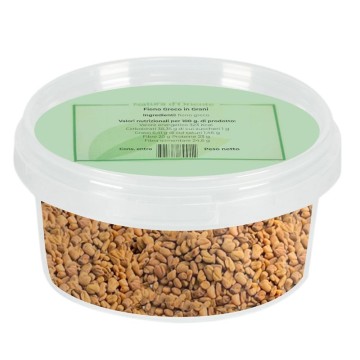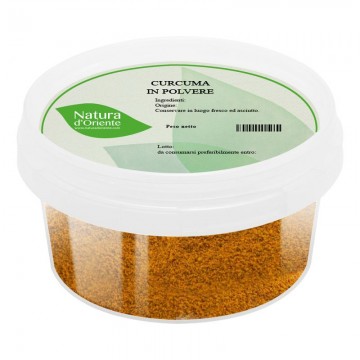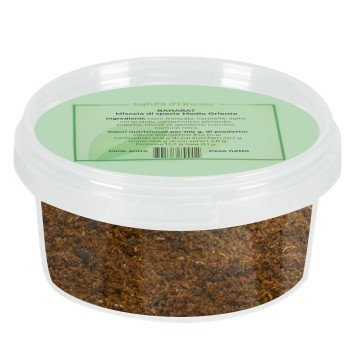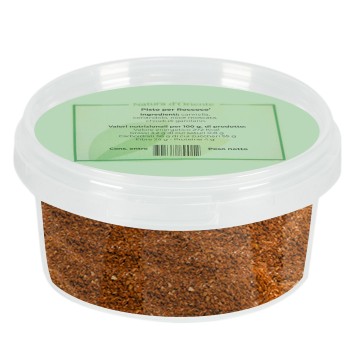This blend has a colorful flavor, due to the presence of many different spices between spicy and fruity. A composite flavor perfect to sprinkle on grilled fish, stews, soups and many vegetarian dishes. It shows an intense and warming flavor, a slightly pungent aroma, typical Indian. It is famous, in fact, as a condiment added to the local snack called “hot mix”. Malabar Curry combines spices and herbs that tease the taste, taking from the tradition of the region of the same name, on the south-western coast of the Indian peninsula. The pleasant complexity, seems to take inspiration from the lush beaches of the Malbar region.
In addition to its flavor, Malabar curry is useful for its digestive properties. The spices contained in curry improve the digestive phase and help the transit of food in the gastrointestinal tract, avoiding the formation of excess gas. The blend also has antioxidant properties that are useful for stimulating metabolism, cardiovascular health and proper blood circulation. It is also useful to use curry at the table to avoid using salt, and follow a low-sodium diet. In addition, the ingredients of Malabar curry provide nutrients such as minerals (turmeric, fenugreek and cumin are rich in iron), calcium, potassium and other elements (vitamins and antioxidants).
Malabar Curry Spices
The blend combines 13 spices and aromatic herbs, for a particular complexity of flavors.
The turmeric infuses the curry with a slightly pungent heat, with bitter notes; the intense and exotic aroma envelops many other spices.
The cloves add a warm taste to the blend with notes between sweet and spicy; the fruity aftertaste and floral aromas increase the light nuances.
Fenugreek has a pungent and slightly bitter taste. The aroma is reminiscent of fresh hay, appreciated for seasoning meat and fish.
Fennel is an element with a sweetish flavour that recalls anise and liquorice. A few pungent notes balance the delicate and fresh aroma.
Garlic introduces a decisive and spicy tone, which the palate welcomes with a strong note to balance the more delicate spicy notes of the curry.
Chili creates the most intense spicy flavour, pungently stimulating the palate with an energetic heat effect.
Pepper is a decisive element on the palate and with an intense aroma; the peppery notes are not excessively spicy and create an effect of depth.
The basil, between sweet and peppery, gives the curry notes of aniseed ideal on meat and fish, a touch of freshness for the blend.
The ginger adds an intense and pungent taste that pairs well with cinnamon and cumin; an ideal touch for vegetables, vegetarian and vegan dishes.
The cardamom enhances the exotic flavor between pungent and sweet floral: the scent with balsamic notes recalls eucalyptus, citrus and honey.
The cinnamon gives the blend a taste between sweet and pungent, with an intense aroma with peppery notes on the nose.
The kummel (meadow cumin) gives the curry powder its pungent and fresh flavor, similar to aniseed; much appreciated for flavoring baked goods and meats.
Mustard infuses the characteristic spicy but sweetish flavor, which enlivens the curry: the pungent aroma evokes anise.
Using Malabar Curry in the kitchen
An ideal mix for those who love Indian flavors, complex between different herbs and spices. It maintains a balance between the individual ingredients, with a harmonious flavor: pungent, with light fruity notes. It is sublime sprinkled on grilled fish, grilled chicken, meat stews, second courses of land and sea. Excellent curry powder on vegetarian or vegan dishes, refines them with a delicate aroma. The version of ground spices makes Malabar Curry versatile and convenient in the kitchen. Curry powder can be added to all recipes, avoiding chopping all the ingredients at the moment. You can mix it, fry the curry in oil, or as a seasoning of ground spices to sprinkle as a finish. It gives dishes a deep yellow color, appreciated for garnishing – just the tip of a teaspoon is enough.
Meat and fish: excellent sprinkled on grilled meat and fish, stews. A Malabar curry seasoning can be added to red and white meat - also appreciated on chicken, lamb or pork.
Savory recipes: You can use it for its balance, when the recipe calls for a not too spicy curry powder. It adds depth and flavour to many dishes – such as Indian Dal (dried pulses, lentils, peas, chickpeas, beans, etc.). It brightens rice, roasted or boiled vegetables, gives potatoes a tangy flavour and enlivens soups. Try it on eggs or in yoghurt for a complex flavour. It is a particular flavouring for baked goods.
Sauces: This curry powder is great for making vegetable sauces, such as yoghurt-based ones. It can flavour mayonnaise and spreads – just a pinch is enough. Malabar sauce is made by adding curry powder to ingredients like tomato, onion and coconut milk.
Vegan Malabar Curry
Ingredients: 2 medium tomatoes (400g) - vegetable or coconut oil, for frying - 2 small onions, finely diced - 2 large garlic cloves, finely diced - 24 curry leaves, fresh or dried - 2 teaspoons ground coriander - 2 teaspoons Malabar curry powder - 1 tablespoon tamarind paste - 1 cup full-fat coconut milk - ½ cauliflower, divided into florets - 50g fresh spinach - 1 cup cooked chickpeas - fine sea salt to taste - 2 tbsp sugar - rice for side dish
Preparation
Peel the tomatoes, roughly chop them and blend them into a smooth paste. Heat 2-3 tbsp oil in a large pan with a lid. Once the oil is hot, add 12 curry leaves and the Malabar curry powder. Fry for a few seconds. Reduce the heat to medium and add the diced garlic and onion to the pan. Fry, stirring occasionally, until the onion softens and turns golden brown (about 6-7 minutes). Add the ground coriander to the pan. Mix everything together and fry for about 30 seconds. Add the blended tomatoes and the prepared tamarind paste. Simmer (uncovered) until it reduces slightly and you see the oil separating from the sauce. Taste and season with salt. Add about ¼ cup (60 ml) of water to the sauce and add the cauliflower florets. Cover with a lid and simmer for about 3 minutes. Add the coconut milk and bring the sauce back to a simmer. Finally, add the cooked chickpeas and fresh spinach. Allow the spinach to wilt in the sauce.
In a small pan, heat 1 tablespoon of oil. Add another pinch of Malabar curry and the remaining curry leaves to the hot oil; fry for about 10 seconds, then pour everything into the large pan. Serve over cooked rice.
Origins and History of Malabar Curry
Its name comes from the Indian coast of Malabar, also known as the Pepper Coast. It is located in the southwestern part of the peninsula, the northern part of the state of Kerala. In this region, also famous for pepper, spices are many and often used in cooking. This is where Malabar curry powder comes from, the fruit of the Anglo-Indian culture of creating ready-made ground spice mixes that are easily exportable.
The word curry, introduced by the English who lived in India during the colonial period, referred to the mixture of spices, different in composition depending on the regional recipes and the different ethnic groups. The Malabar coast is one of the most humid regions of southern India, where many religions coexist – a perfect laboratory for different food recipes, with just as many spices. Let us remember that the term curry comes from typical local dishes with a spicy “kari” sauce, also called curry; like the tree whose leaves are used in cooking. It is important, for this reason, to talk about ground curry or curry powder when talking about the ready-made spiced preparation. There are different types of spice mixes including Indian garam masala and tandoori curries, English curry, Ethiopian curry, Thai curry. The variety of curry mixes knows almost no bounds, with the possible combination of spices, and Malabar is one such example.





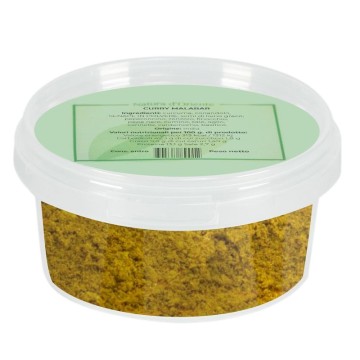



 No reward points for this product.
No reward points for this product.




